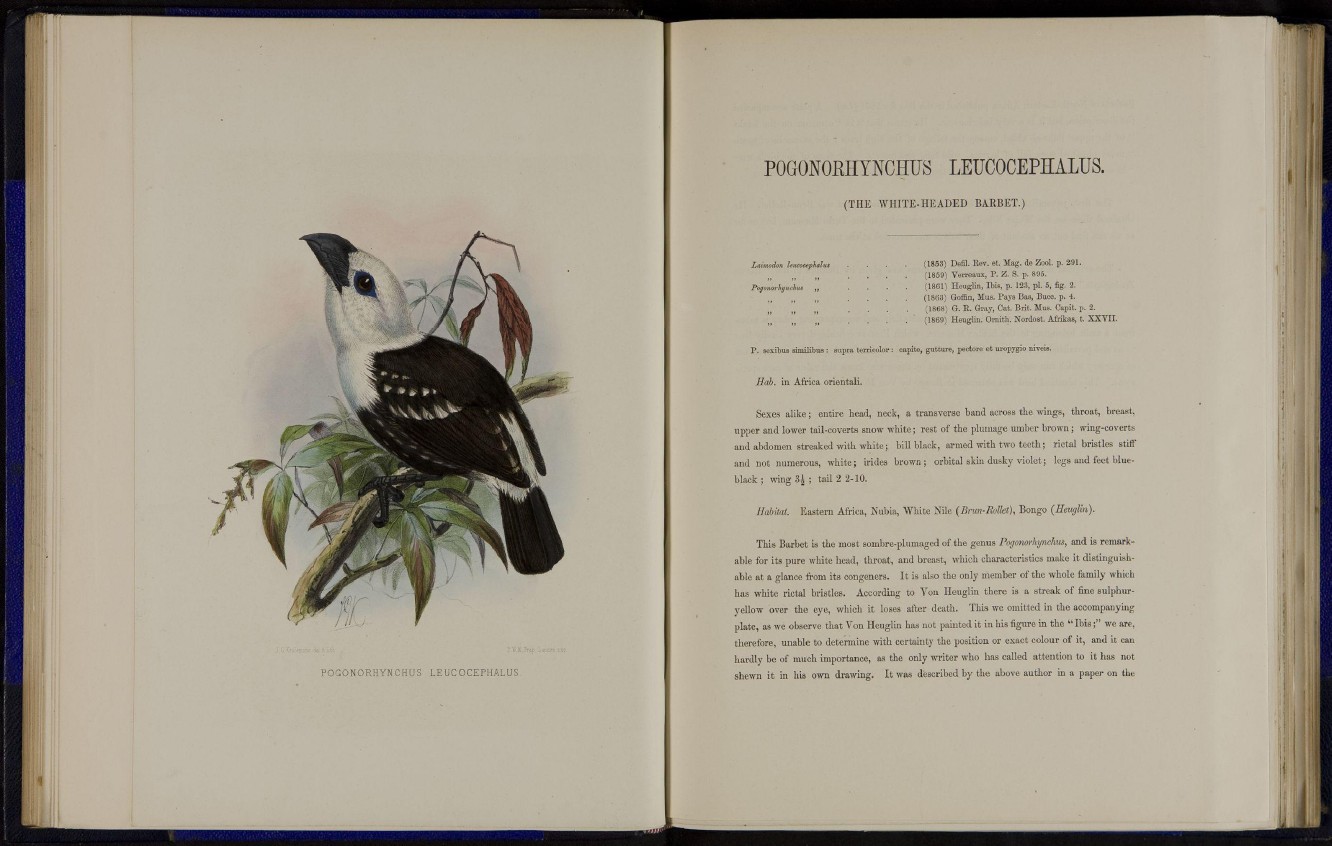
POGONORHYNCHUS LEUCOCEPHALUS
P0G0N0KHYNCHÏÏS LETJOOCEPHALTJS.
( T H E W H I T E - H E A D E D BARBET.)
Laimodon leucoccphalus
Pogonorhynehus
(1853) Defil. Rev. et. Mag. de Zool. p. 291.
(1859) Verreaux, P. Z. S. p. 895.
(1861) Heuglin, Ibis, p. 123, pi. 5, fig. 2.
(1863) Goffin, Mus. Pays Bas, Bucc. p. 4.
(1868) G. R. Gray, Cat. Brit. Mus. Capit. p. 2.
(1869) Heuglin. Ornith. Nordost. Afrikas, t. XXVII.
sibus siniilibus : supra temcolor : capite, gutture, pectore et uropygio
Hab. in Africa orientali.
Sexes alike; entire head, neck, a transverse band across the wings, throat, breast,
upper and lower tail-coverts snow white; rest of the plumage umber brown; wing-coverts
and abdomen streaked with white; bill black, armed with two t e e t h ; rictal bristles stiff
and not numerous, white; irides brown; orbital skin dusky violet; legs and feet blueblack
; wing 3 | ; tail 2 2-10.
Habitat. Eastern Africa, Nubia, White Nile ( Brun-Rollet), Bongo (Heuglin).
This Barbet is the most sombre-plumaged of t h e genus Pogonorhynehus, and is remarkable
for its pure white head, throat, and breast, which characteristics make it distinguishable
at a glance from its congeners. It is also the only member of the whole family which
has white rictal bristles. According to Yon Heuglin there is a streak of fine sulphuryellow
over the eye, which it loses after death. This we omitted in the accompanying
plate, as we observe that Von Heuglin has not painted it in his figure in the " I b i s ; " we are,
therefore, unable to determine with certainty the position or exact colour of it, and it can
hardly be of much importance, as the only writer who has called attention to it has not
shewn it in his own drawing. It was described by t h e above author in a paper on the